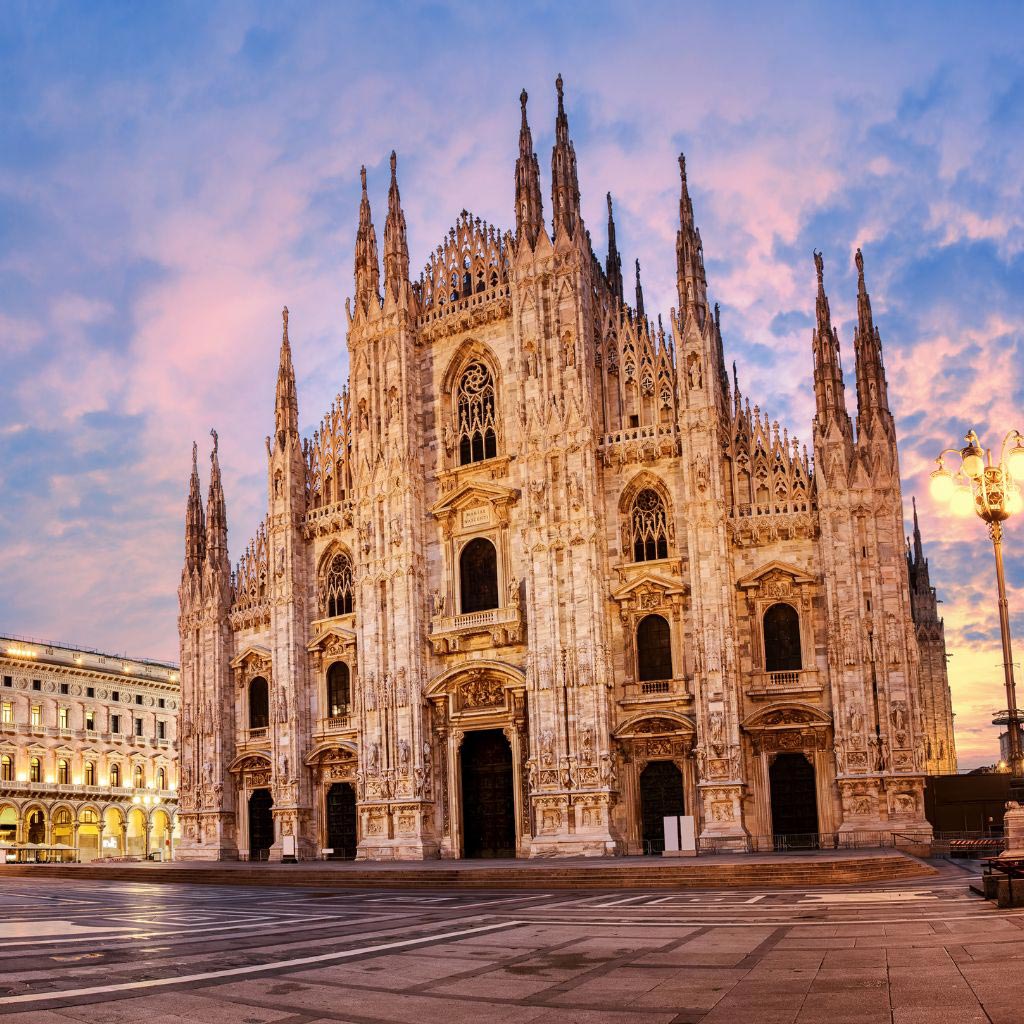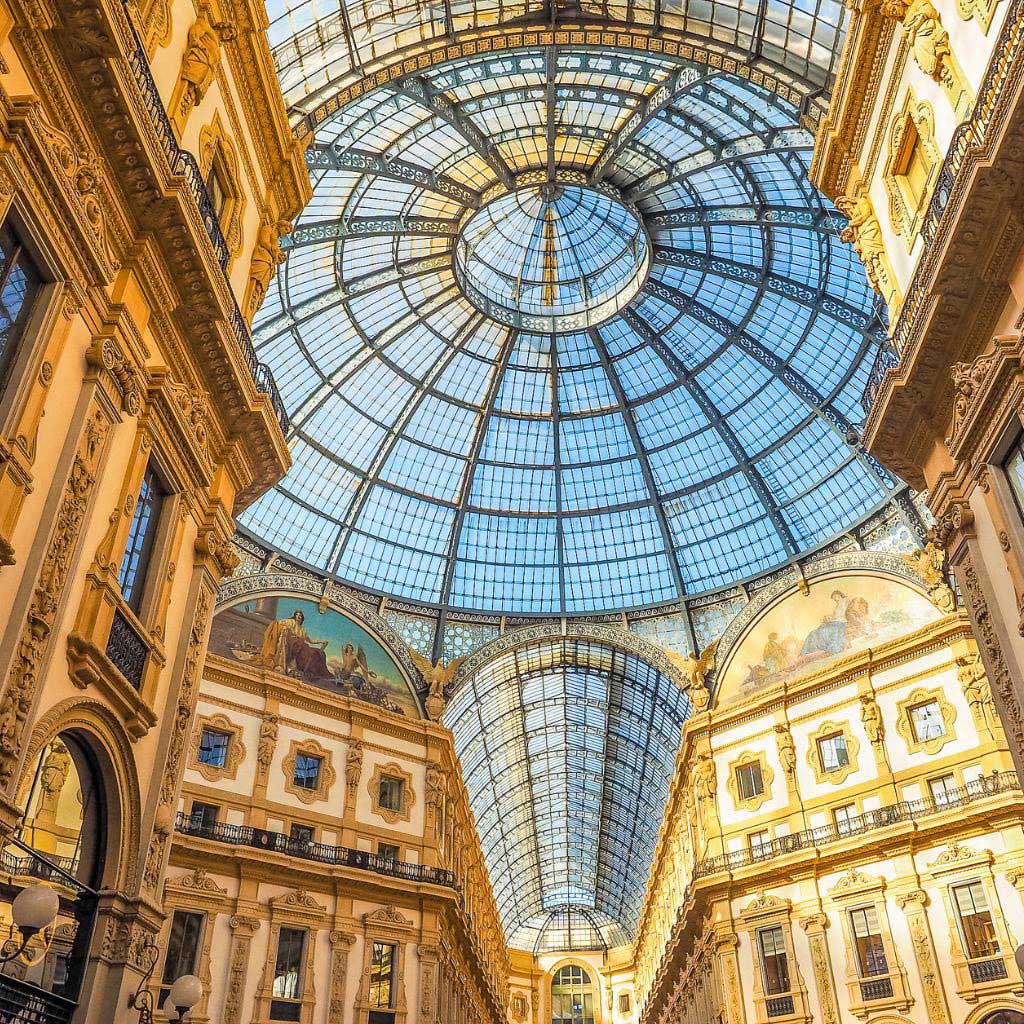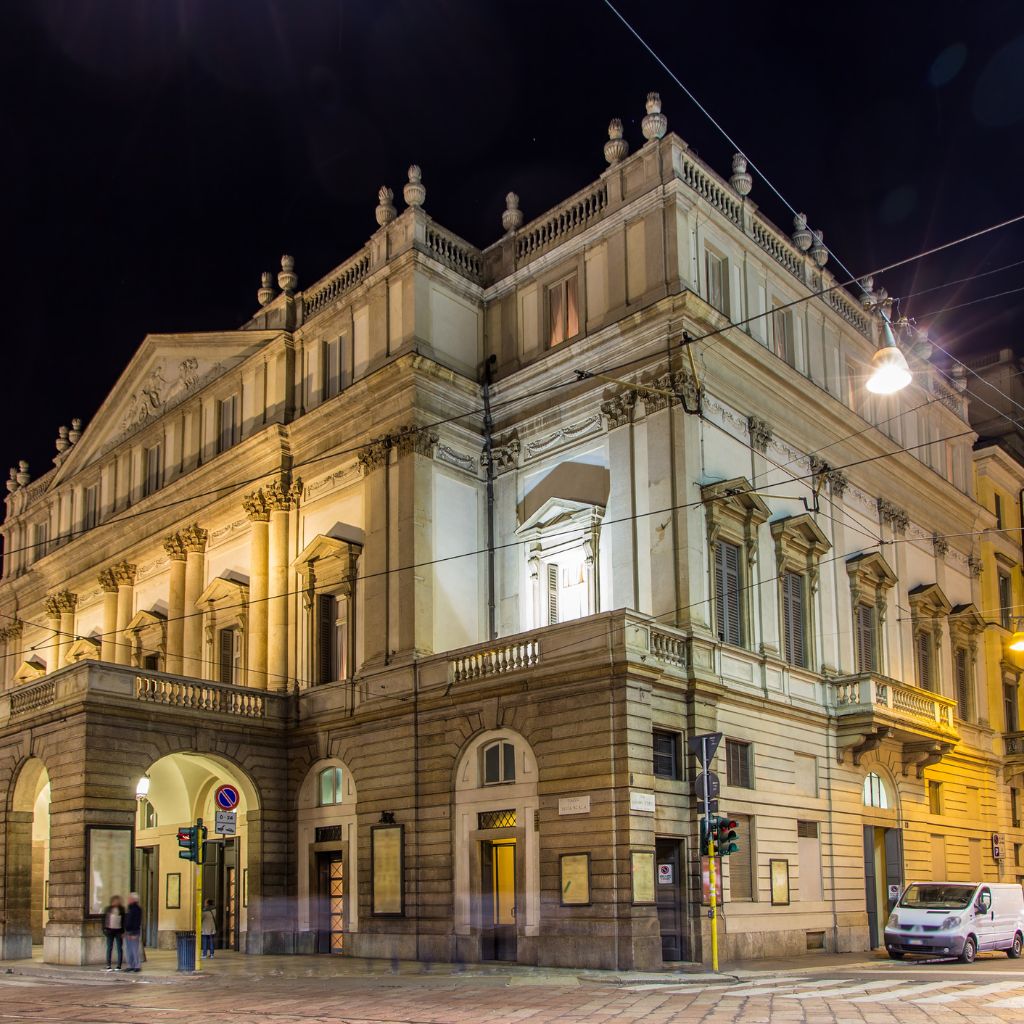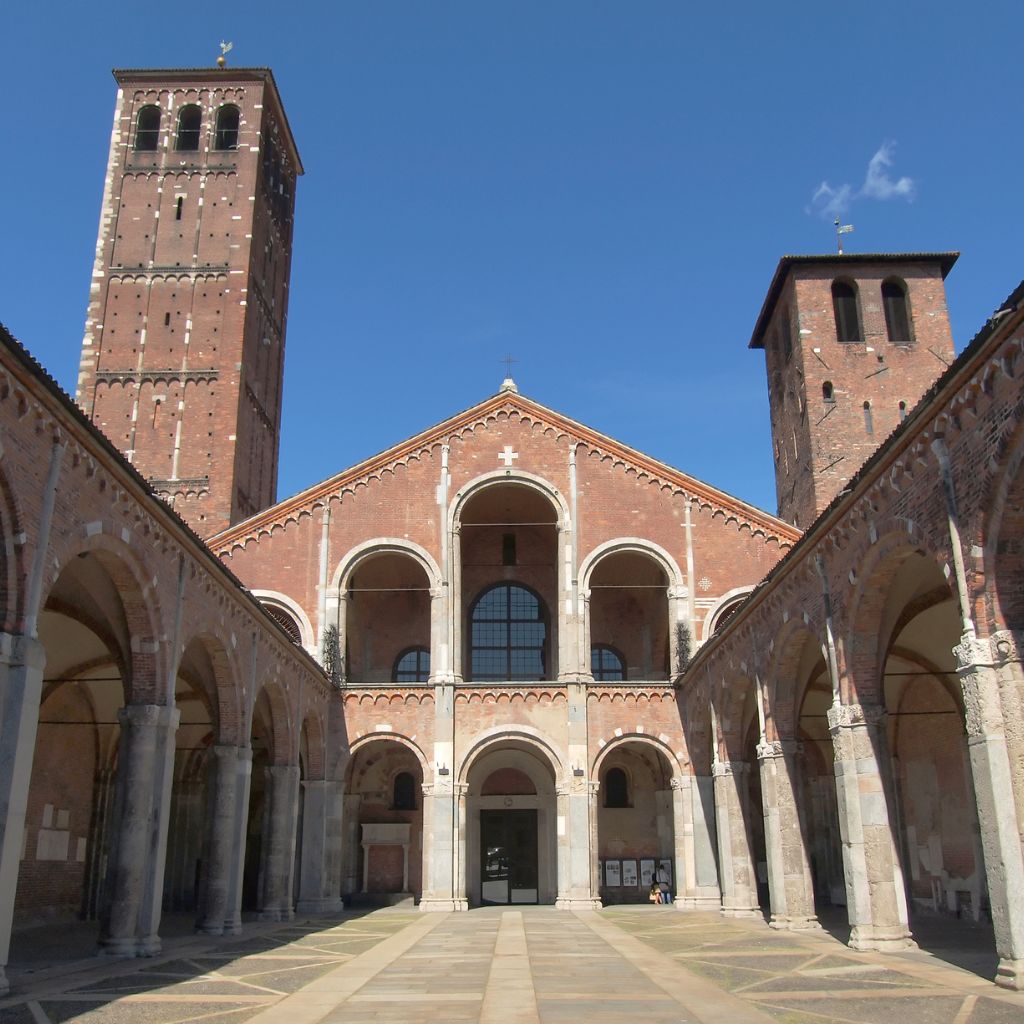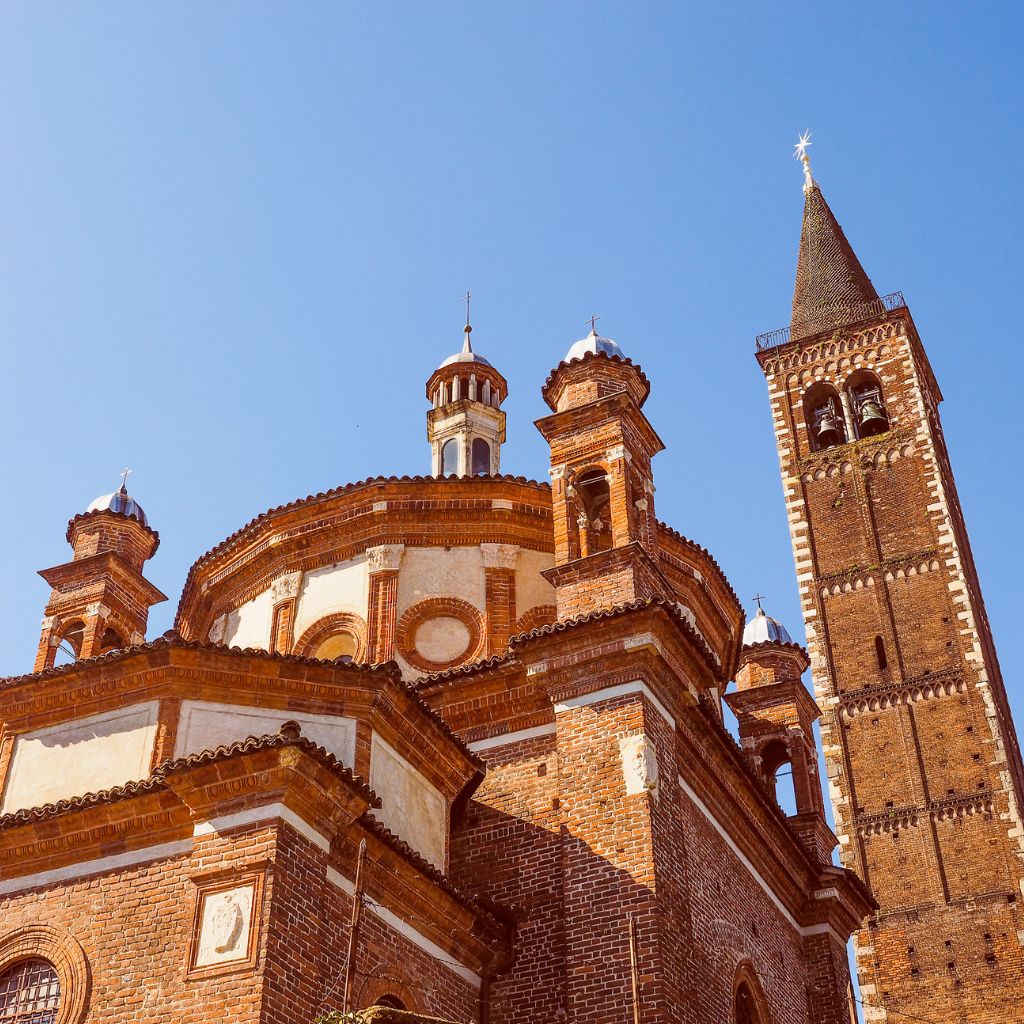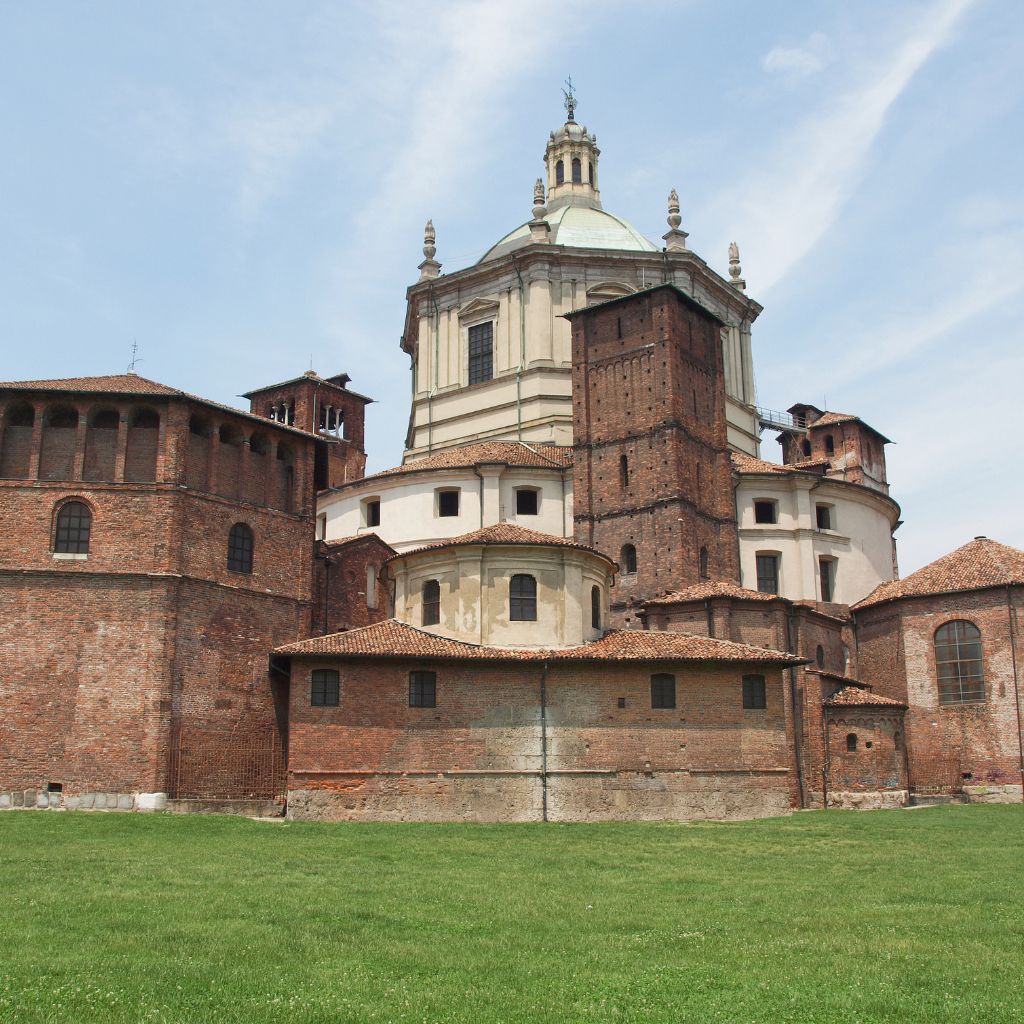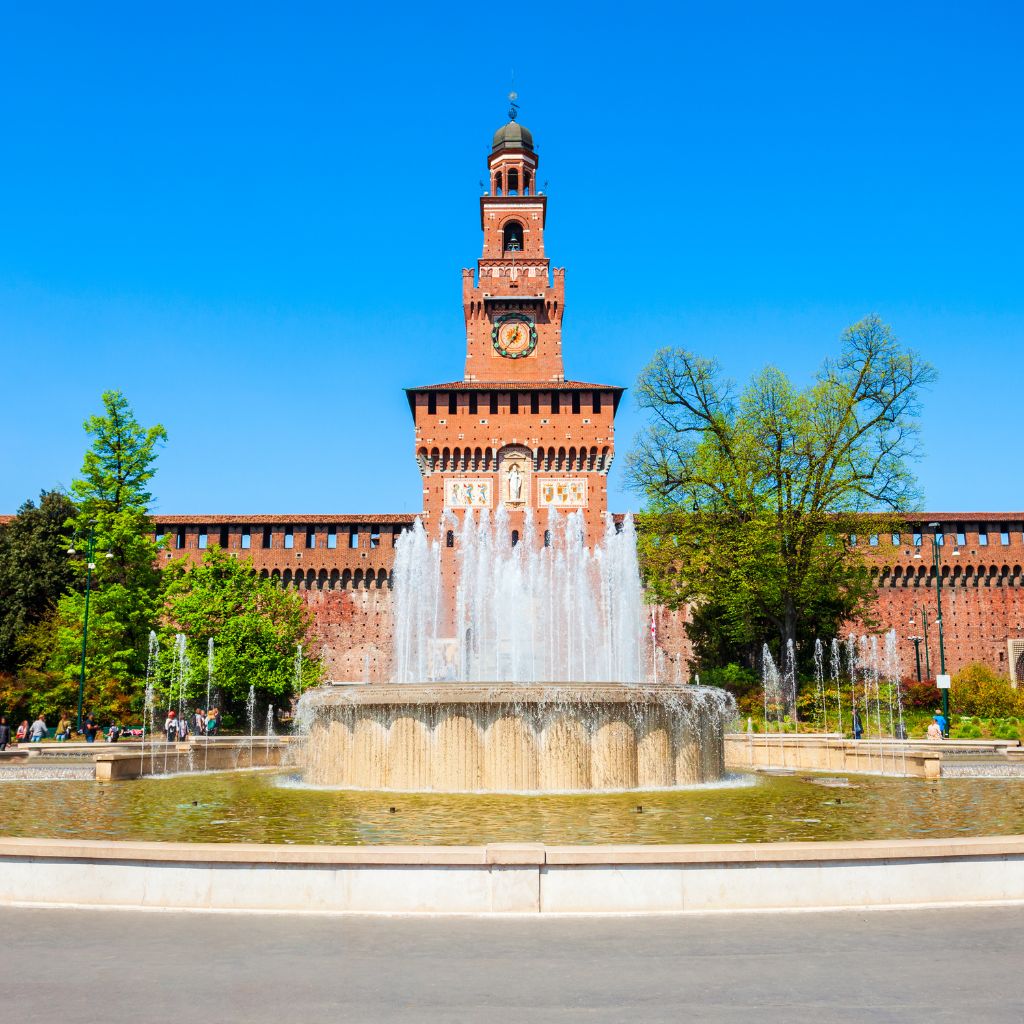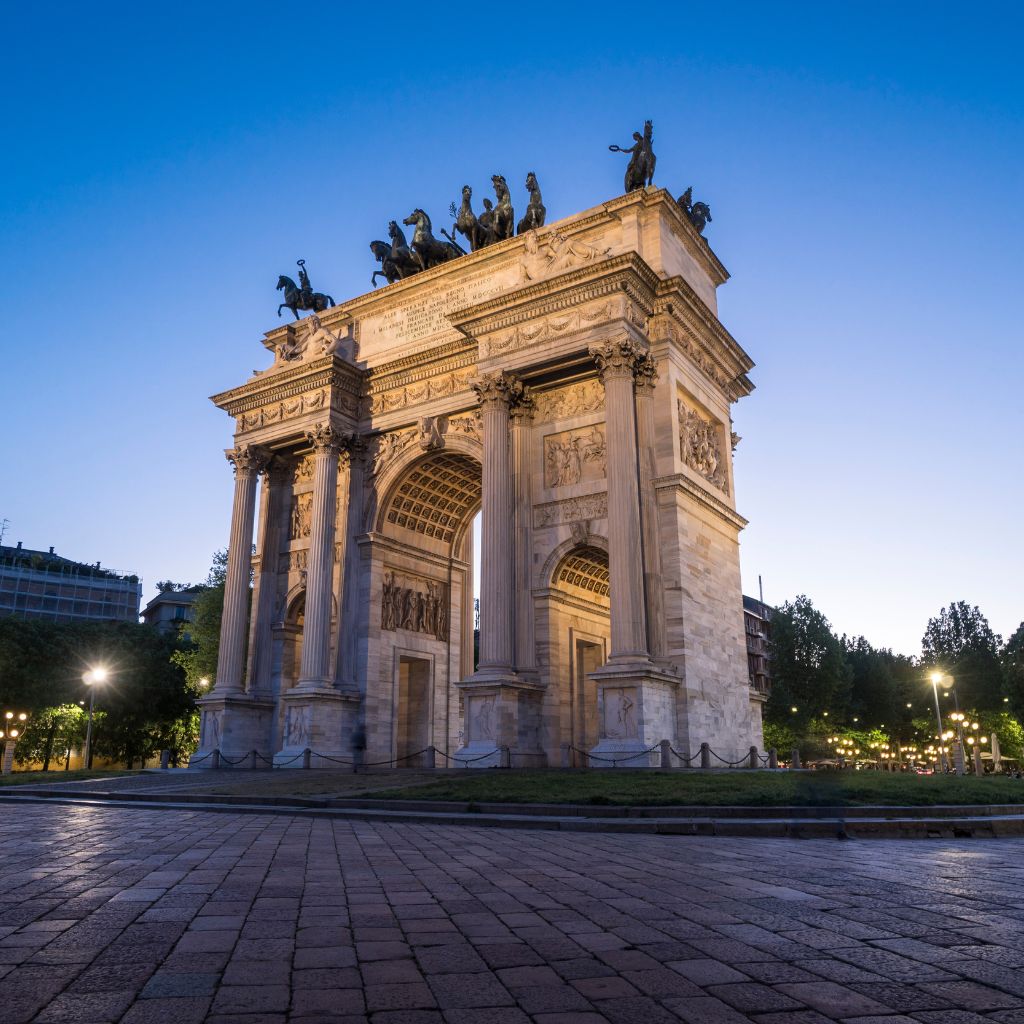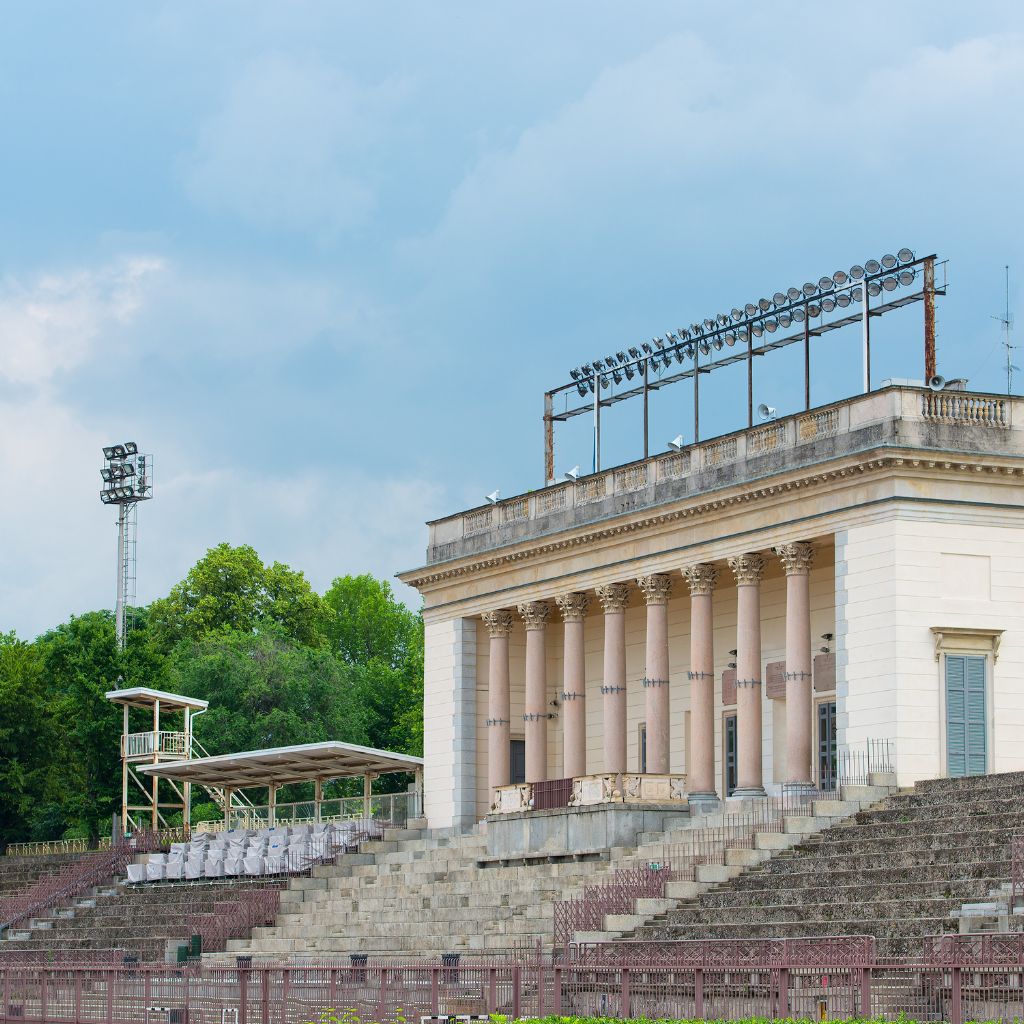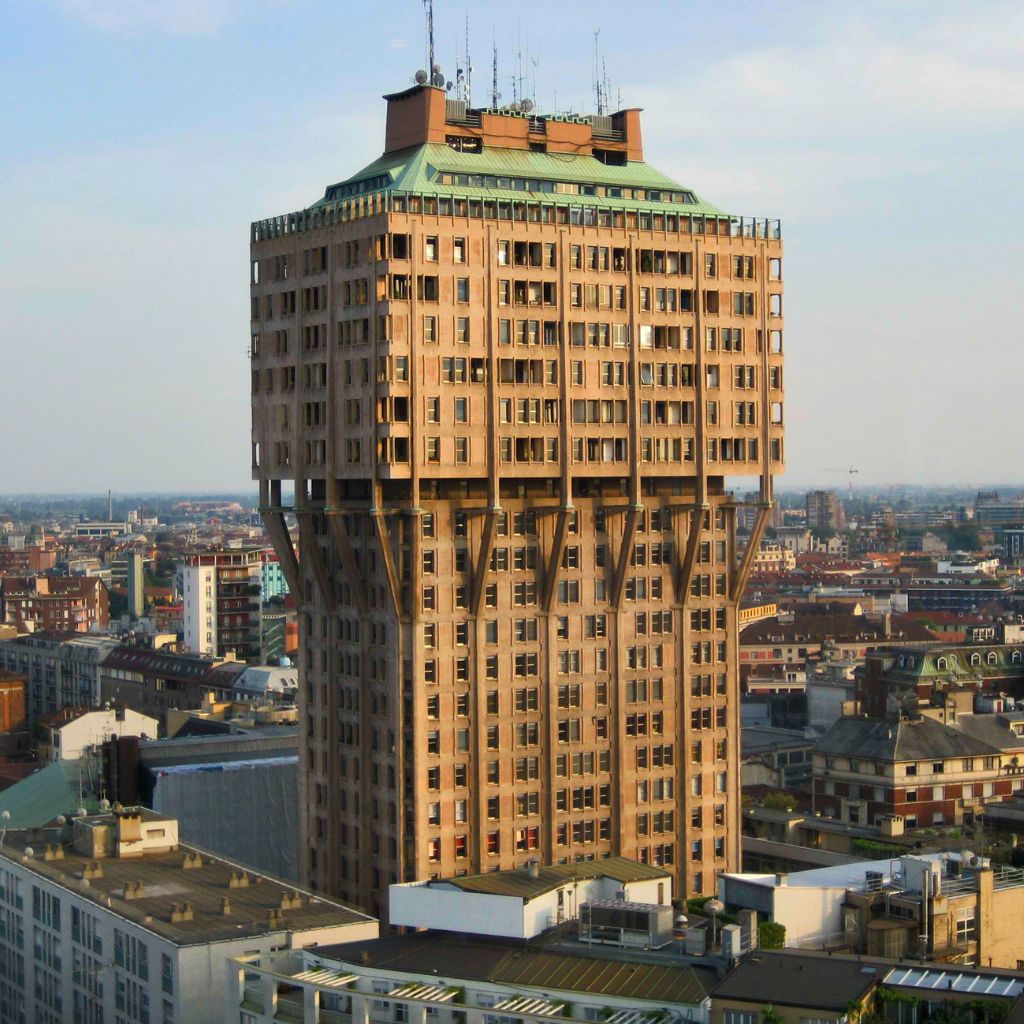Duomo and Madonnina: The Heart of Milan
The construction of Milan Cathedral began in 1386 on the site of the ancient basilicas of Santa Maria Maggiore and Santa Tecla. The work was overseen by the Veneranda Fabbrica del Duomo, a committee founded in October 1387. The dialect expression “a ufo” (synonymous of free of charge) dates back to this period, when the Dukes of Milan granted loads of marble arriving from Ticino river without paying any taxes. These loads were marked with the wording AUF, i.e. ad usum fabricae.
It took over 500 years to complete the construction of the cathedral. The cathedral is a masterpiece of Gothic architecture and is adorned with over 4,000 statues, gargoyles, and other decorative elements. The most famous statue is the Madonnina, a gilded figure of the Virgin Mary that stands atop the cathedral’s highest spire. The Madonnina is 4.16 meters tall and weighs 900 kilograms.
Not everyone knows that the cathedral also houses a relic of the Holy Nail, one of the nails used to crucify Jesus Christ. The nail is preserved in a tabernacle on the cathedral’s internal vault, and is only taken out on special occasions, such as the Feast of the Exaltation of the Holy Cross. The annual procession that takes place on the Saturday, Sunday, and Monday closest to September 14. This procession, which was originally much longer, now only takes place inside the cathedral
Galleria Vittorio Emanuele II: The Living Room of Milan
The Galleria Vittorio Emanuele II is considered to be one of the most beautiful shopping arcades in the world, that was built between 1865 and 1877.
It is. It is located in the heart of Milan, between Piazza Duomo and Piazza della Scala. The arcade is covered by a glass and iron roof, and it is lined with shops, cafes, and restaurants.
The central dome of the Galleria has a splendid mosaic representing the continents of Asia, Africa, Europe, and America. Under the central dome, there is a mosaic with the Savoy coat of arms and four animals representing the capitals of Italy (Milan, Turin, Florence, and Rome).
Not everyone knows that the famous premises located under the cross plan formed by two perpendicular arches covered by a glass and iron vault, are obliged to have retro gold lettering on a black background for their business signs.
Teatro alla Scala: The Theatre Born from a Fire
One of the most renowned opera houses in the world is the Teatro alla Scala. It was designed by Giuseppe Piermarini, an Italian architect, and built on the site of the church of Santa Maria alla Scala in 1776. The theater, with its four tiers of boxes and two galleries, can seat up to 2,000 spectators. Salieri’s L’Europa riconosciuta was the first opera performed at the Teatro alla Scala in its opening night on August 3, 1778. The theater has hosted many of the world’s most famous operas, including works by Giuseppe Verdi, Giacomo Puccini, and Gioacchino Rossini. Additionally, it has become a popular venue for ballet performances
Not everyone knows that the theatre was built to replace the Royal Ducal Theatre after it was destroyed by fire in 1776, allegedly started by Archduke Ferdinand Carl. The story goes that he intercepted a note from his wife, Maria Beatrice d’Este, to her lover, arranged to meet in a box at the theatre, and had his henchmen kidnap her and segregate the lover. After the party, the box was set on fire, completely destroying the theatre. Ferdinand built a new one in response to citizen petitions.
Sant'Ambrogio: Between Faith and Mythology
Initially known as Basilica Martyrum, Sant’Ambrogio was built to honor the memory of Saints Protasius and Gervasius, who were martyred in the 2nd century AD. Milan Bishop Ambrose commissioned the construction of the basilica to serve as a final resting place for the saints’ remains. In 397, the basilica was renamed in honor of Ambrose after his remains were interred there. Today, it stands as a stunning example of Lombard Romanesque architecture and is considered one of Milan’s most significant religious buildings. Among its many remarkable features are its Golden Altar and the Sarcophagus of Stilicho, a fourth-century masterpiece adorned with intricate high reliefs.
Not everyone knows that on the square around the basilica stands a marble pillar called “The devil’s column” with two very visible holes. According to legend, these two holes were caused by the Devil during a fight with Ambrogio. Kicked by the Saint, the devil got stuck with his horns in the column and managed to free himself only by vanishing through the two holes. The basilica also houses a bronze snake with healing powers, originally a wedding gift from Emperor Otto III to Princess Stephanie of Constantinople. Despite the cancellation of the wedding, the snake remained in Milan and became a popular attraction.
Sant'Eustorgio: the legend of the Three Magi
The Basilica of Sant’Eustorgio houses the remains of the Three Magi, who visited Jesus Christ at his birth. Legend has it that the Roman Emperor Constantine donated the remains to Eustorgio, the Milan Bishop, in the 4th century. They were initially kept in the old church until it was destroyed by the Emperor Frederick Barbarossa in 1162. Subsequently, the remains were transported to the Cologne Cathedral in Germany, where they remained until 1903. Milanese citizens then petitioned the Pope to have the remains returned to their city, and the Pope agreed. A few bone fragments were returned to Milan, and these are now located in the Magi Chapel at the Basilica of Sant’Eustorgio. The chapel boasts dazzling mosaics and frescoes that depict the Magi’s journey to Bethlehem
Not everyone knows that on the last Sunday of April, visitors flock to the Basilica to participate in an unusual but significant tradition. By resting their heads on the ark that houses the relics of martyr Pietro da Verona, they seek protection from headaches throughout the year. The origins of this custom date back to when Milan Archbishop, Giovanni Visconti, kept the saint’s head at his residence instead of at the basilica where the rest of his body was located. Visconti suffered from severe headaches until he returned the head to its rightful place at the basilica.
Piazza Vetra: the blackest square in Milan
Piazza Vetra has a dark past that dates back to the Roman period, where it was once an old military quarter. The name “Vetra” is believed to have come from the Vepra or Vedra ditch that once bordered the square.
During the Middle Ages, Piazza Vetra served as an execution ground for commoners, while nobles were executed in Piazza Mercanti. However, it was also a place of hope and redemption. The statue of San Lazzaro, also known as “La Colonnetta,” represents the brotherhood that assisted those condemned to death, reminding us that even in the darkest moments, there is always a glimmer of hope. Additionally, the square was the location of a prison, which was ultimately demolished in the early 1900s.
Not everyone knows that one of the most well-known executions that took place at Piazza Vetra was that of Gian Giacomo Mora and Piazza Guglielmo. They were wrongly accused of spreading the plague in Milan back in 1630. Their names were made famous by Alessandro Manzoni’s novel “La Colonna Infame”.
Castello Sforzesco: The Castle That Is a Palace
The construction of the Castello Sforzesco was initiated by Francesco Sforza on the grounds of the former Porta Giovia Castle, once the residence of Galeazzo II Visconti. Under Sforza’s governance, the castle was repurposed as the ducal palace. Noteworthy collaborations occurred within its walls during the late 15th century, including the presence of Leonardo da Vinci, who worked there with the patronage of Ludovico il Moro. Despite facing destruction on multiple occasions throughout its history, the castle was consistently rebuilt. Initially utilized as a prison and military quarters, the castle bore a negative connotation among Milanese residents as a symbol of foreign dominance. Presently, it accommodates several museums, such as the Pinacoteca, exhibiting paintings spanning from the 14th to the 18th centuries, and the Archaeological Museum, showcasing artifacts originating from ancient Rome and Greece.
Not everyone knows that that the castle’s present-day aesthetics stem from the restoration efforts undertaken in the late 1800s by the architect Luca Beltrami. Beltrami not only restored the castle to its original splendor but also introduced new elements like the moat and drawbridge.
Arco della Pace: Looking for the Right Name
The Arco della Pace, a triumphal arch in Milan, was conceptualized by the Italian architect Luigi Cagnola in 1806 with the original purpose of commemorating Emperor Napoleon’s triumphs under the name “Arco della Vittoria.” However, the arch’s narrative shifted with the resurgence of Austrian influence post-1815. Consequently, construction was halted until 1826 when it was redesigned to honor the Congress of Vienna, hence rechristened as “Arco della Pace.” Subsequent alterations in 1859 commemorated the Battle of Magenta, where the Franco-Piedmontese forces overcame the Austrians. The arch’s inscriptions were then revised to extol the partnership between Napoleon III and Vittorio Emanuele II.
Not everyone knows that exists a legend suggesting that the Austrians rotated the bronze sculptural group atop the arch, causing the sestiga to face away from Paris and towards the Castle. This adjustment also encompassed alterations to the sculptural reliefs. Specifically, the relief portraying the coronation of Naples was substituted with a depiction of two soldiers engaged in a handshake
Arena Civica: Remembering Ancient Rome
The Arena Civica, an amphitheater designed by the Italian architect Luigi Canonica in 1806, drew inspiration from ancient Roman amphitheaters. Constructed to serve as a grand venue for the cultural events and public festivities of the Cisalpine Republic and later the Italian Kingdom, it was inaugurated on 18 August 1807 in the presence of Emperor Napoleon. Subsequently acquired by the municipality of Milan in 1870, it was henceforth known as the Arena Civica. Throughout the late 19th and early 20th centuries, the arena hosted a variety of sporting events, including the inaugural football match between the Italian national team and France in 1910. Following World War II, the Arena resumed its role as a venue for athletics competitions, rugby matches, soccer, American football, and outdoor performances.
Not everyone knows that the construction utilized fill material sourced from the fortifications of the Castle, which were dismantled due to the obsolescence resulting from advancements in military tactics. The Arena, alongside the Arco della Pace and Foro Buonaparte, constituted a pivotal aspect of the endeavor to refurbish the Castle area into a distinguished section of the city.
Torre Velasca: The Highest Mushroom in Milan
The Torre Velasca stands as a significant architectural achievement in Milan post-World War II, symbolizing the city’s resurgence. Designed by the BBPR architectural firm, the tower was finalized in 1958, soaring 108 meters high with 26 floors. Its distinctive “mushroom” configuration stems from the deliberate allocation of space for offices, professional studios, and private residences across its levels. As one of Milan’s earliest skyscrapers, the Torre Velasca sparked controversy; while some critiqued its design, others lauded it as an emblem of the city’s renewal.
Not only knows that the area where the tower now stands was established in 1598 under the direction of the Spanish governor Giovanni Ferdinando Velasco. He opted to expand a narrow passage to accommodate the procession of masked floats during the Carnival, originating from via Larga and proceeding along Corso di Porta Romana.

